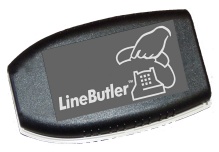Stage 2: Project Scoping

Caller Connect example
Background — Prior Stage
With the growing population of ‘Aging in Place’ seniors, telephone communication with family members and others is of the paramount importance. It was discovered that many elderly individuals were experiencing breaks in their telephone service due to accidentally leaving a telephone ‘off the hook.’
Step 2.1
Innovation Opportunity: An opportunity was identified to develop a unique telephone accessory — the Line Butler. This accessory would need to be an external attachment to a telephone or to the telephone line that enables the telephone to receive incoming calls even when it is off the hook.
Step 2.2
Preliminary Market Assessment: The primary market was identified as the elderly or people with disabilities who are living alone and may accidentally knock or leave the telephone ‘off the hook’. These people are in particular need of uninterrupted access to a telephone line in order to ensure their safety. In addition, individuals with children or pets would also find the Line Butler beneficial, as the children or pets may accidentally leave or knock the phone off the hook, causing an inconvenience to the parent/pet owner. These individuals are likely to buy this device for themselves, while the children of elderly parents are likely to buy it for their parents’ use. A search of recently introduced and successful products in the telephone accessory marketplace revealed that existing devices did not provide the planned functionality of the proposed device. The competing product analysis also demonstrated that the target price for the Line Butler would have to be in line with telephone caller identification devices and priced under $30.
Preliminary Business Assessment: The device was intended to be sold for profit through the Assistive Technology marketplace. In addition to the extensive product search conducted for the market assessment, the team performed a prior art and patent search on the concept. Patentability was judged possible depending on the design of the mechanism used by the telephone company to alert a consumer that a telephone was “off the hook” — what is known as the howler tone. Feasibility was based on the envisioned device’s ability to reconnect the telephone circuit in response to the howler tone. These findings provided guidelines for the prototype’s initial design specifications.
Preliminary Technical Assessment: To complete the technical assessment, initial design criterion were established. The team contacted Verizon to identify the frequency of the howler tone, which would serve as the activation cue for the Line Butler. The team found Verizon to be very receptive to providing technical information needed for the design of the product. As a result of these discussions, as well as an analysis of internal and external capabilities, the design was deemed technically feasible.
Step 2.3
Potential Barriers: At the onset of this project, the increasing use of cell phones was not a major concern. At the time, the elderly segment of the target market tended to resist the use of radically new technology such as cell phones. However, the advent of cell phones and VOIP (Voice over Internet Protocol) technologies acted as disruptive technologies in the mainstream segments of the target market.
Results
During the development phase of this project, the emergence of disruptive technologies (cell phones, VOIP) caused the mainstream marketplace for traditional landline telephones to shrink rapidly. The dwindling target market was people maintaining a landline. Further, the elderly demographic are hesitant to spend discretionary income on what could be considered a non-essential item. In light of these market changes, an extensive marketing campaign to the children of the elderly would have to be mounted to encourage them to purchase the item as a gift for their elderly parents. With a close eye on changing market conditions, the project was continued through Stage 7, where a small number of units were produced in an initial trial run. Upon reaching Gate 7, the team carefully evaluated the new market conditions and determined that large-scale production would no longer be feasible. Even with a successful targeted marketing campaign, the loss of the larger secondary market (parents with children or pets) created a situation where manufacturers would not be able to recoup the high-dollar investments needed to continue through the production phase. With potential revenues declining as cell phone usage increased, the project was terminated at Gate 7, and the initial run of manufactured units were sold through Dynamic Living, an assistive technology distributor.
